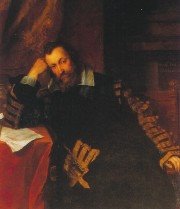Wednesday, 23 May 2007
Mary's story - 8
* * *
The inquiry hinged on the "Casket Letters"
— eight letters purportedly from Mary to Bothwell,
reported by James Douglas, 4th Earl of Morton to have been found in Edinburgh in a silver box engraved with an F (supposedly for Francis II), along with a number of other documents, including the Mary/Bothwell marriage certificate.
The authenticity of the Casket Letters has been the source of much controversy among historians. The originals have since been lost, and the copies available in various collections do not form a complete set. Mary argued that her handwriting was not difficult to imitate, and it has frequently been suggested either that the letters are complete forgeries, that incriminating passages were inserted before the inquiry, or that the letters were written to Bothwell by some other person. Comparisons of writing style have often concluded that they were not Mary's work. It would have required a skilled forger to produce this series of delicate poems in French, dedicated to a loved one (presumed to be Bothwell)[1]
Elizabeth considered Mary's designs on the English throne to be a serious threat, and so eighteen years of confinement followed, much of it in Sheffield Castle and Sheffield Manor in the custody of George Talbot, 6th Earl of Shrewsbury and his redoubtable wife Bess of Hardwick. Bothwell was imprisoned in Denmark, became insane, and died in 1578, still in prison. In 1580 Mary's confinement was transferred to Sir Amias Paulet, and she was under his care for the rest of her life.
However, in 1570, Elizabeth was persuaded by representatives of Charles IX of France to promise to help Mary regain her throne. As a pre-condition, she demanded the ratification of the Treaty of Edinburgh, something Mary would still not agree to. Nevertheless, William Cecil, 1st Baron Burghley, continued negotiations with Mary on Elizabeth's behalf.
The Ridolfi Plot, which attempted to unite Mary and the Duke of Norfolk in marriage, caused Elizabeth to reconsider. With the queen's encouragement, Parliament introduced a bill in 1572 barring Mary from the throne. Elizabeth unexpectedly refused to give it the royal assent. The furthest she ever went was in 1584, when she introduced a document (the "Bond of Association") aimed at preventing any would-be successor from profiting from her murder. It was not legally binding, but was signed by thousands, including Mary herself.
Mary eventually became a liability that Elizabeth could no longer tolerate. Elizabeth did ask Mary's final custodian, Amias Paulet, if he would contrive some accident to remove Mary. He refused on the grounds that he would not allow such "a stain on his posterity." Mary was implicated in several plots to assassinate Elizabeth, raise the Catholic North of England, and put herself on the throne, possibly with French or Spanish help. The major plot for the political takeover was the Babington Plot, but some of Mary's supporters believed it and other plots to be either fictitious or undertaken without Mary's knowledge.
http://en.wikipedia.org/wiki/Mary_queen_of_scots
* * *
Subscribe to:
Post Comments (Atom)

No comments:
Post a Comment